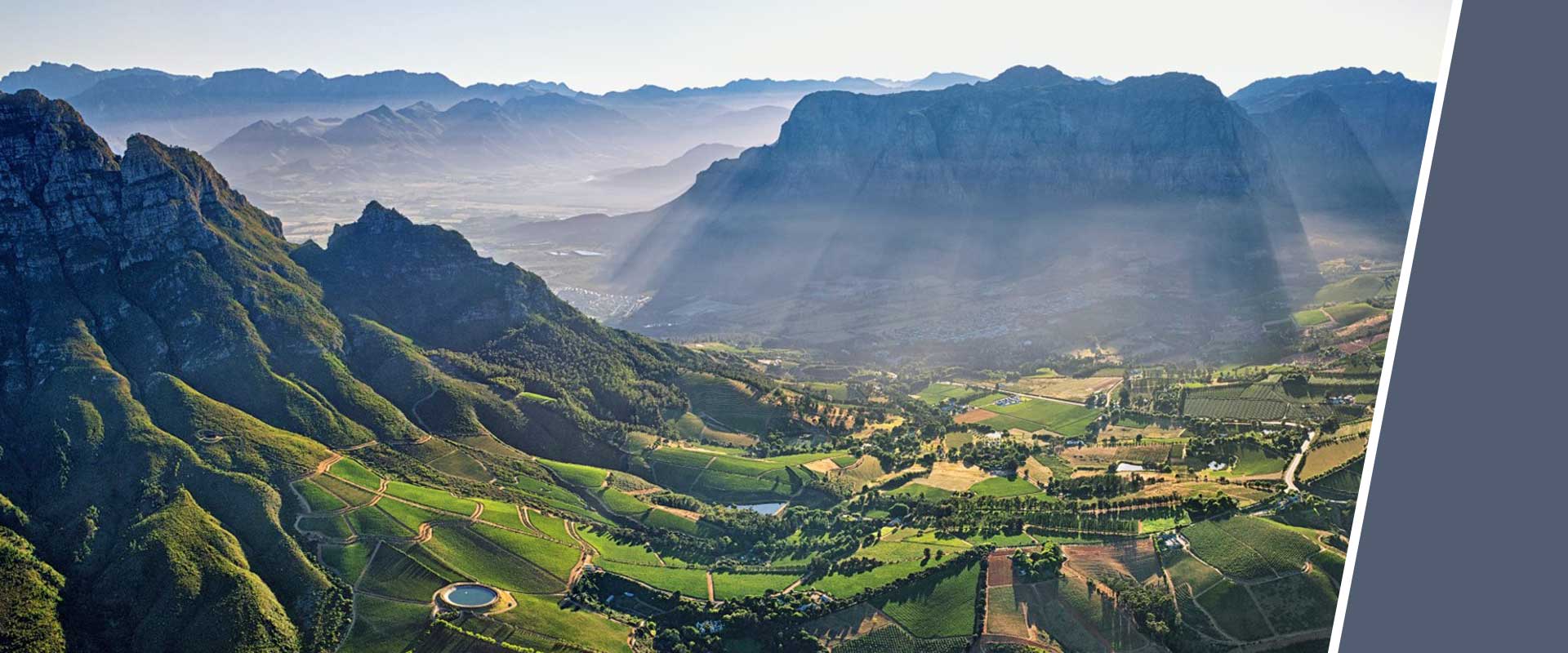
How the vine delivers top wine from South Africa
The vine is a perennial plant and bears fruit for up to 30 years, sometimes even longer. Quite a few winegrowers swear by older vines in particular, as they have already proven their resilience and taste quality. But even young plants can already produce excellent wine, age is not the decisive criterion. Often underestimated is the fact that every vintage has a double effect. Firstly, in the selection, i.e. the actual vintage, and the resulting wine. Here, sunlight, health and rainfall at the right times are particularly important. On the other hand, each vintage still has an effect after and into the next one. The vine already produces the new buds for the next year in the same period in which it already bears fruit. This is exactly one of the reasons why wine from South Africa delivers such a high and consistent quality, because here the fluctuations are rather small compared to Europe.
In spring the vine gets the energy it needs
Throughout the year, the roots of the vine plant extract the necessary nutrients from the soil, provided they are dissolved in water. In spring, the plants begin to weep or bleed, in technical terms, then sap flows out at the ends, which at the same time announces the growth phase. An extremely important phase has begun, as it is here that the foundations are laid for a successful vintage of premium wine. A large part of the above-ground plant parts are woody, these are the trunk and the two-year-old shoots. The shoots sprout from the buds, some of which will develop grapes, others remain closed and only open the following year. The emerging vine foliage produces the necessary energy through photosynthesis to produce up to a hundred aromatic substances, which later flow into the slowly developing grapes. During this time, a healthy balance of sunlight and rainfall is of immense importance. Without the necessary energy and nutrients, even the most beautiful summer is of no use. In the transition from winter to spring, the rainfall in South Africa is particularly abundant, so the minerals are present in dissolved form with the first strong rays of sunshine. The vine thus finds ideal conditions to grow optimally. A good result can only be achieved if both the above-ground and underground parts of the vines are well developed. The roots must be strong enough to reach the precious water, and at the same time the foliage must have an optimal surface to absorb the sunlight. With low planting, experienced vintners increase the height of the foliage so as not to let too much of the sunlight fall unused on the ground – which would then only heat up unnecessarily and a lack of water could be the result. With dense planting, on the other hand, it can happen that the leaves interfere with each other. Now the vintner must cleverly interfere with the growth of the vine, for example by removing some shoots in the course of the vegetation phase. In this way, he aerates the vine at the same time. So the denser the planting, the higher the amount of work and thus the costs per hectare.
Grape ripeness provides the special taste
During grape ripening, more sugar accumulates and at the same time the growth phase of the vine plant stops. A lack of water accelerates this process. Conversely, this means that too much water unintentionally shortens grape ripening. A high amount of rainfall is therefore rather harmful in this phase, also because high humidity also favours the risk of diseases and pest infestation. Summer in South Africa is therefore almost ideal for wine, as it is mostly dry and warm. Thanks to the "Cape Doctor", the cooling wind from the Atlantic, temperatures in the vineyards remain within perfect limits.
Last but not least, the yield of the vines is important for quality. Each vine has a specific number of nutrients and aromas that it can supply to the grapes. So if a vine has produced many grapes, it has to distribute more of its nutrients and aromas. In such a case, each grape receives less of the valuable substances in total and becomes weaker on its own. A lower concentration of sugar, colour and flavour carriers are the result. The wise winegrower prevents this by pruning the shoots and grapes at an early stage. In this way, the grapes on the vines are fewer in number and the total yield is lower, but each individual grape is of higher quality. Therefore, year after year, the vintners have to determine and implement the optimal relationship between yield and quality.
